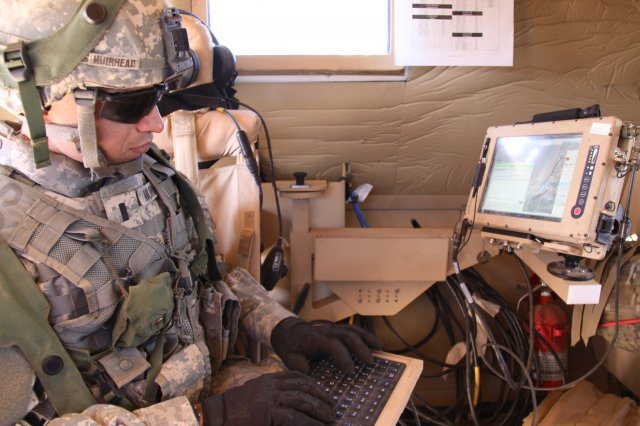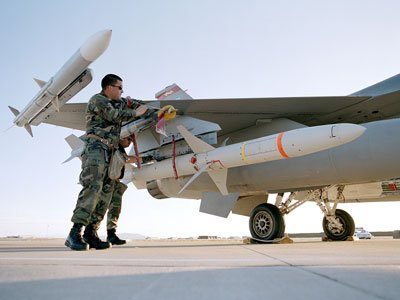The Army is preparing to send its next-generation “Blue Force Tracking 2” force-locating technology to Afghanistan. The system is faster and more efficient than its predecessor in providing important data to Soldiers who are on the move in combat, service officials said.
The Blue Force Tracking 2, or BFT 2, satellite network, which provides Soldiers real-time force tracking data on a digital map display screen, uses increased-data throughput and greatly modernized transceivers with improved forward-link capability to massively improve the speed and “refresh” time of the network, said Lt. Col. Bryan Stephens, BFT 2 product manager.
“BFT 2 provides more bandwidth which allows the system to update the blue picture much more often,” he said. “The resulting increased volume of traffic improves accuracy of moving platforms by a factor of ten.”
The BFT 2 technology has already been fielded to units in Korea and is slated to deploy to Afghanistan in coming months. Unlike existing BFT technology which is “half-duplex” and cannot receive and transmit at the same time, BFT 2 has what’s described as “full duplex” capability. That capability allows the system to simultaneously receive and transmit.
“With BFT 2, I can send a file and receive updates at the same time,” Stephens explained.
The BFT 2 has evolved through the Army’s Agile Process wherein emerging or next-generation technologies, capabilities and solutions are assessed and integrated in a combat-relevant environment at White Sands Missile Range, N.M.
Called network integration evaluations, or NIEs, these exercises help develop promising capabilities such as BFT 2. BFT 2 has been included in several NIEs and completed its limited user test in October 2011.
Blue Force Tracking 2 is integrated with a next-generation force-tracking system called Joint Battle Command – Platform, also known as JBC-P, which uses next-generation mapping technology, chat and messaging capability along with an improved user graphical interface to provide combat-relevant position-location information to units on the move by placing icons over a digital map display.
“JBC-P’s chat is more interoperable with a wider population of systems because it communicates with an intermediary known as the Universal Collaboration Bridge,” said Lt. Col. Mark Daniels, product manager, JBC-P.
The JBC-P, which combines position location information for both Army and Marine Corps units, can be integrated into vehicle displays or hand-held mobile units for the dismounted individual Soldier. In terms of a hand-held display, JBC-P is integrated with the Nett Warrior program, a situational awareness technology for dismounted units on the move which uses smart-phone like devices and software-programmable radio.
Working in an integrated fashion with Nett Warrior, JBC-P can obtain and display information using GPS technology or by transmitting data through a terrestrial network using a high bandwidth waveform called Soldier Radio Waveform, or SRW. SRW is used by the single-channel Joint Tactical Radio Systems Rifleman Radio, or JTRS, to network information across the force.
“If a Soldier loses satellite communications, he would still be able to use the JTRS software-programmable Rifleman Radio and other terrestrial radios to move the information. A redundant capability is there,” said Daniels.
JBC-P software uses an improved map engine able to more quickly render graphical displays, he added. The JBC-P program builds upon and improves integration and user-interface features built into an interim software called Joint Capabilities Release, also known as JCR, which is also integrated with Nett Warrior.
Additionally, JCR and JBC-P are both designed to work with Tactical Intelligence Ground Reporting, or TIGR, an intelligence database which compiles tactically significant information along specific routes. The JCR and JBC-P software applications work a bit differently with respect to TIGR; JCR is co-hosted with TIGR, whereas JBC-P is fully integrated with TIGR, allowing it to take better advantage of the mapping tools and BFT 2 network.
JBC-P achieved a “milestone C” production decision in July. It is slated for a limited user test this fall in the upcoming NIE 13.1.











